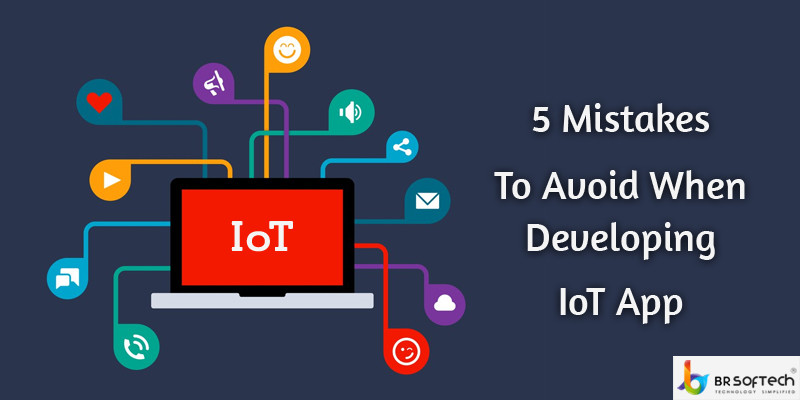The Internet of Things (IoT) has transformed the way businesses and consumers interact with technology, enabling smart devices to communicate seamlessly. However, developing an IoT app presents unique challenges that developers must navigate carefully. For businesses looking to create a successful IoT solution, working with mobile application developers in Dubai can help ensure a smooth process. In this article, we’ll explore the top mistakes to avoid when developing an IoT app to help you maximize the potential of this cutting-edge technology.
1. Neglecting Security from the Start
One of the biggest challenges in IoT development is ensuring robust security. IoT devices are vulnerable to cyberattacks, making them potential entry points for hackers. Many developers make the mistake of not prioritizing security measures from the beginning, leaving their app and users exposed to threats.
To avoid this mistake, you should implement encryption protocols, use secure communication channels, and ensure that data transmitted between devices and the cloud is protected. Regular security updates and patches are essential to safeguard your IoT app from evolving threats. Consider working with IoT-specific security experts to further fortify your app’s defenses.
2. Overlooking Scalability
Scalability is crucial in IoT app development. Many developers focus on creating an app that works well for a small number of devices or users but fail to consider how the app will perform as the network of connected devices grows. Overlooking scalability can lead to performance issues and system crashes.
When designing your IoT app, think long-term. Implement scalable cloud solutions that can handle increasing loads, and design your app’s architecture to accommodate more devices and users without compromising performance. Testing the app’s scalability early in the development process will help ensure its future success.
3. Ignoring Interoperability
The IoT ecosystem involves a wide range of devices, platforms, and protocols, which means your app must be able to communicate with various systems. Ignoring interoperability is a common mistake that limits the functionality of an IoT app. Without compatibility with different devices and systems, your app may struggle to provide the seamless experience users expect.
To avoid this issue, prioritize compatibility with industry-standard protocols such as MQTT, HTTP, and CoAP. Additionally, ensure your IoT app can integrate with popular platforms and hardware used by your target audience. A flexible, interoperable app will enhance user experience and increase its market potential.
4. Not Prioritizing User Experience (UX)
Many developers get caught up in the technical aspects of IoT app development and neglect the user experience (UX). No matter how advanced your app is, if users find it difficult to navigate or operate, they will abandon it. Prioritizing UX is essential to the success of your IoT app.
To enhance UX, focus on creating a user-friendly interface that allows users to control and monitor devices effortlessly. Keep in mind that IoT apps often involve complex data and device management, so simplifying the user journey is crucial. Conduct regular user testing to gather feedback and make necessary improvements to your app’s design and functionality.
5. Inadequate Data Management
IoT devices generate vast amounts of data, and many developers make the mistake of not planning for efficient data management. Without proper data storage and processing strategies, your app may become overwhelmed, resulting in performance issues or loss of valuable information.
When developing an IoT app, choose cloud-based storage solutions that can handle large-scale data processing and provide real-time analytics. Additionally, consider implementing edge computing to process data closer to the device, reducing latency and improving app performance. Effective data management ensures your app can handle the complexities of IoT devices without compromising efficiency.
6. Underestimating Power Consumption
IoT devices often run on limited power sources, such as batteries, and failing to account for power consumption is a critical mistake. An app that drains the battery too quickly will frustrate users and limit the functionality of the devices.
To avoid this, optimize your app’s communication protocols, ensuring that devices only transmit data when necessary. Reduce the frequency of updates and data transmissions to conserve power, and consider using low-power communication technologies like Bluetooth Low Energy (BLE) or Zigbee. By minimizing power consumption, you can improve the longevity and usability of your IoT app.
7. Overcomplicating the Development Process
IoT app development can be complex, but overcomplicating the development process can lead to delays, budget overruns, and a less functional app. Many developers make the mistake of trying to include too many features or technologies, which can overwhelm both the development team and the end-users.
Instead, focus on creating a Minimum Viable Product (MVP) with essential features that address the core problem your app is designed to solve. This allows you to test the app with real users and gather valuable feedback. Once the MVP is successful, you can gradually add more features and improvements based on user needs.
8. Inadequate Testing and Maintenance
Failing to thoroughly test your IoT app is a recipe for failure. Many developers rush through the testing phase, resulting in an app that is prone to bugs, security vulnerabilities, and performance issues. IoT apps, in particular, require extensive testing across multiple devices, networks, and environments.
Ensure you conduct both functional and security testing to identify potential issues before launch. Test your app’s performance under different conditions, including network disruptions, device malfunctions, and high traffic volumes. Post-launch maintenance is equally important; your app must be regularly updated to fix bugs, enhance security, and improve functionality based on user feedback.
9. Ignoring Compliance and Regulations
IoT app development is subject to various regulations, including data protection laws and industry-specific standards. Many developers make the mistake of ignoring these regulations, which can result in legal issues, fines, and loss of user trust.
When developing an IoT app, research the relevant laws and standards that apply to your industry, especially when it comes to data privacy and security. Ensure your app complies with GDPR, HIPAA, or any other applicable regulations to avoid legal complications and protect your users’ data.
Conclusion
Developing an IoT app requires careful planning and attention to detail. By avoiding common mistakes such as neglecting security, scalability, and interoperability, you can create a successful app that meets the needs of your users and the demands of the IoT ecosystem. Collaborating with mobile application developers in Dubai can further help you navigate the complexities of IoT app development and deliver a product that stands out in a competitive market.
Remember, building an IoT app is an ongoing process that involves regular testing, updates, and improvements. By focusing on user experience, data management, and compliance, you can ensure your IoT app remains functional, secure, and user-friendly.





